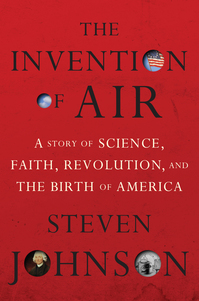(p. 198) “All advances in science were proscribed as innovations.” Jefferson is using the older, negative sense of the word “innovation” here: a new development that threatened the existing order in a detrimental way. (The change in the valence of the word over the next century is one measure of society’s shifting relationship to progress.) But that regressive age was now over, and Priestley–the most forward-thinking mind of his generation–could now consider himself fully at home:
Our countrymen have recovered from the alarm into which art and industry had thrown them: science and honesty are replaced on their high ground, and you, my dear Sir, as their great apostle, are on its pinnacle. It is with heartfelt satisfaction that in the first moments of my public action, I can hail you with welcome to our land, tender to you the homage of its respect and esteem, cover you under the protection of those laws which were made for the wise and good like you, and disdain the legitimacy of that libel on legislation which under the form of a law was for some time placed among them.
Perhaps inspired by the legendary optimism of Priestley himself, Jefferson then added some of the most stirringly hopeful words that he ever put to paper:
(p. 199) As the storm is now subsiding, and the horizon becoming serene, it is pleasant to consider the phenomenon with attention. We can no longer say there is nothing new under the sun. For this whole chapter in the history of man is new. The great extent of our Republic is new. Its sparse habitation is new. The mighty wave of public opinion which has rolled over it is new. But the most pleasing novelty is, it’s so quietly subsiding over such an extent of surface to its true level again. The order and good sense displayed in this recovery from delusion, and in the momentous crisis which lately arose, really bespeak a strength of character in our nation which augurs well for the duration of our Republic; and I am much better satisfied now of it’s stability than I was before it was tried.
Source:
Johnson, Steven. The Invention of Air: A Story of Science, Faith, Revolution, and the Birth of America. New York: Riverhead Books, 2008.


